Rye levain sandwich sourdough bread

This buttery sandwich bread with a thin crust and smooth, chewy crumb inside will be a great base for any sandwich!
So this is officially my new favorite bread!
It's been a long time since I fell in love with baking sandwich bread. The dough is usually great to work with due to the butter content, and it sticks less during the process. It bakes in a loaf tin so I don't have to worry about any shape imperfections!
And the best part is that the next day when the bread "rests" I can slice it all up and keep it pre-sliced, just like regular sandwich bread from the store! This saves me time and lots of crumbs from cutting on the counter when making a snack or breakfast.
How I got to making homemade sandwich bread can be found in the article on Sourdough sandwich bread. But that one is all wheat and we're going to go about it a little differently this time.
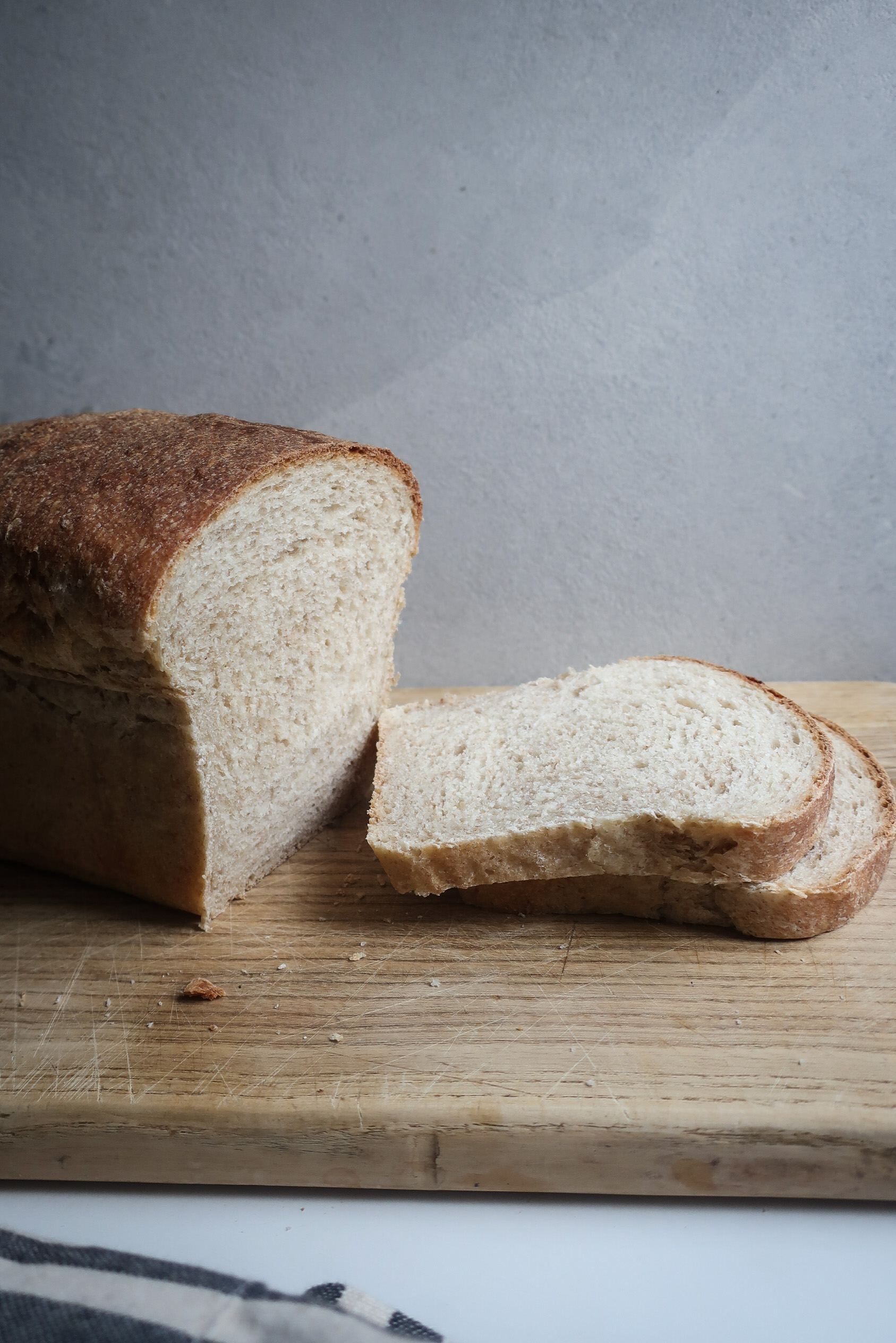
I have a little secret to bake bread at home in a relaxed and absolutely stress-free way. If I'm not using an active wheat sourdough starter straight away, I'll start a rye levain in the evening for wheat-rye breads or pure rye breads.
The trick is that I adjust my recipes so that I can choose which bread to make in the morning. Simply put, I make the levain the ALWAYS THE SAME WAY. That is, I use 75g whole wheat rye flour + 75g water + 1 tbsp sourdough starter.
Learn more about how I maintain and feed my sourdough starter in this article.
In the morning, depending on the time, mood or the necessary ingredients, I will make bread. Most often it is wheat-rye bread, 100% rye bread or my Seeded bread. I usually reach for this recipe when:
- I have little time to dedicate to bread,
- I get up in a bad mood,
- one or both of my kids get up in a bad mood.
But one morning I had a craving for my sandwich bread and that's how this recipe came together. After baking the bread and eating the first bite, I was so excited that I said, "This is the best bread I've ever eaten!" Such joy overwhelmed me! And then I baked it a second time, a third time, and now I'm baking a straight big loaf and I really worry that soon we'll have to start baking two loaves!
This bread has an addictively delicate crispy crust, a soft crumb with tiny holes, is wonderfully buttery of course, and the shorter fermentation makes it just a little sour . So it is suitable for sourdough beginners who are just getting used to the taste of sourdough. And that makes it the perfect base for any sandwiches, toasts or anything else you can think of!
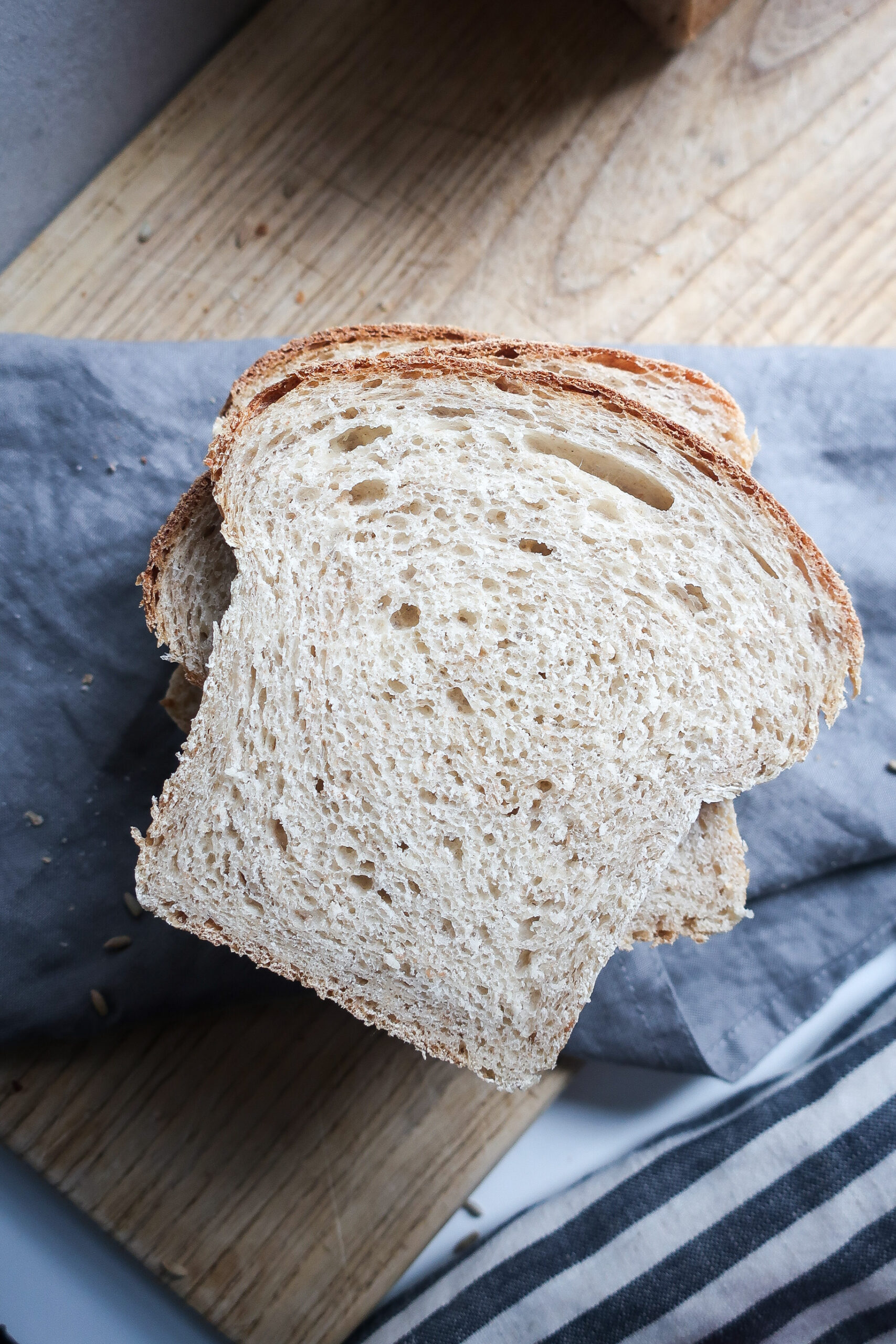
What is the difference between sourdough sandwich bread and classic sourdough bread?
Both types of bread are made in a similar way from flour, water, levain and salt. However, into my sandwich bread I also add sugar or honey and butter. The sugar gives the bread a slightly sweet taste and makes a thin, slightly crispy crust. The butter scents the dough wonderfully and softens the crumb, making it wonderfully soft with tiny holes. The sandwich bread also has different qualities after baking thanks to these extra ingredients, especially it crumble less while cutting.
What to brush on the sandwich bread before baking?
The first time I baked bread, I had just melted lard on the stove. So, as part of my lazy approach to cooking, I brushed the dough with lard because it was too far away to go for milk in the fridge. It turned out absolutely delicious! And so, I will forever only brush this bread with lard. But with using milk, cream or just water and the bread will be just as good!
What other kind of levain can I use for sandwich sourdough bread?
I like to use whole wheat rye flour for my levain. But if I don't have it, bread flour will do, or you can even substitute wheat, spelt or buckwheat flour in all its variations. But I always prefer whole wheat flour for making levain, even when baking white bread. Wholemeal flour during long fermentation of levain allows it to soften nicely and improves its nutritional benefits.
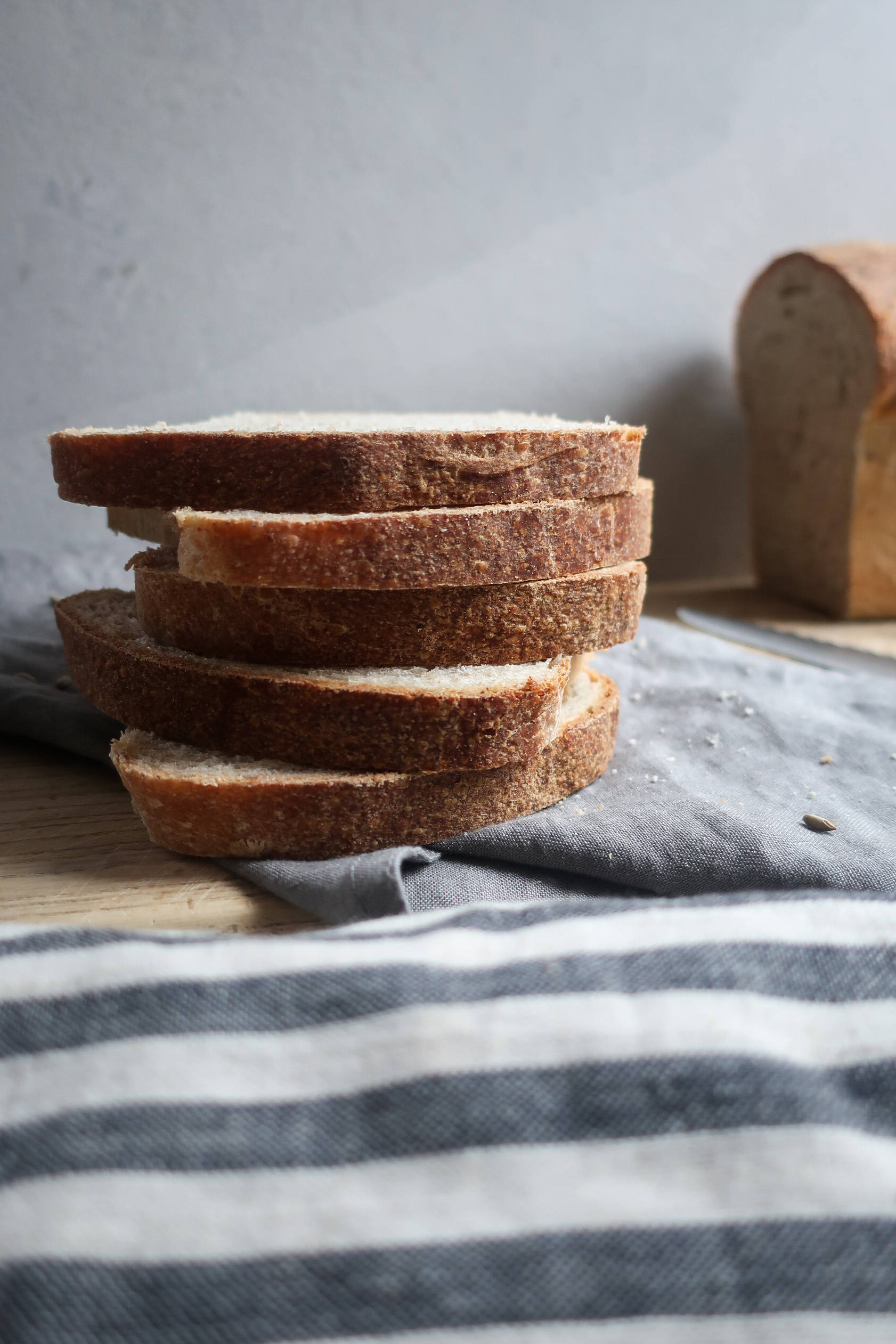
What kind of flour can I use for sandwich sourdough bread dough?
In my recipe I use spelt flour, and beyond the recipe I often add some wholemeal spelt flour. However, with whole wheat flour, the bread is not as fluffy, but a bit more nutritious. Of course, instead of spelt flour, you can also use regular plain wheat flour or flour mixed with bread flour. It is ideal to use as much smooth flour as possible, such as the light one. This will give the bread a lovely fluffy crumb!
How to make rye levain sandwich sourdough bread
Start the day before by making the rye levain. In a bowl, mix 75 g wholemeal rye flour + 75 g water + 1 tbsp sourdough starter. Cover the bowl with a plastic bag and leave to ferment overnight for about 8-12 hours.
Find out how to properly make rye levain step by step a recipe for Seeded bread.
The next morning, add all the ingredients- for the dough to the bowl with rye levain: flour, melted butter, salt, sugar and water. Just knead the dough with a wooden spoon so that no dry spots are visible. Cover the bowl with a plastic bag and leave to rise for 3-4 hours in a warm place.
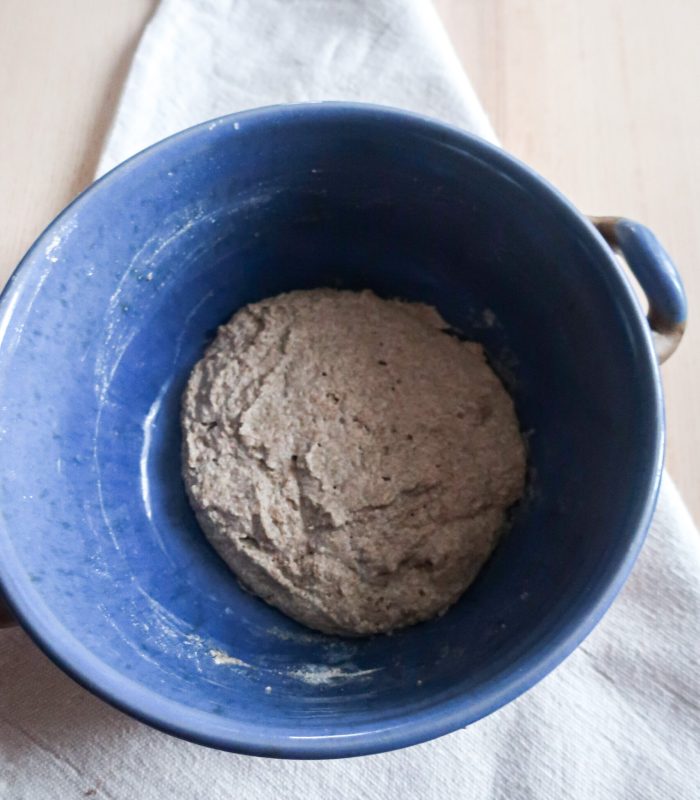
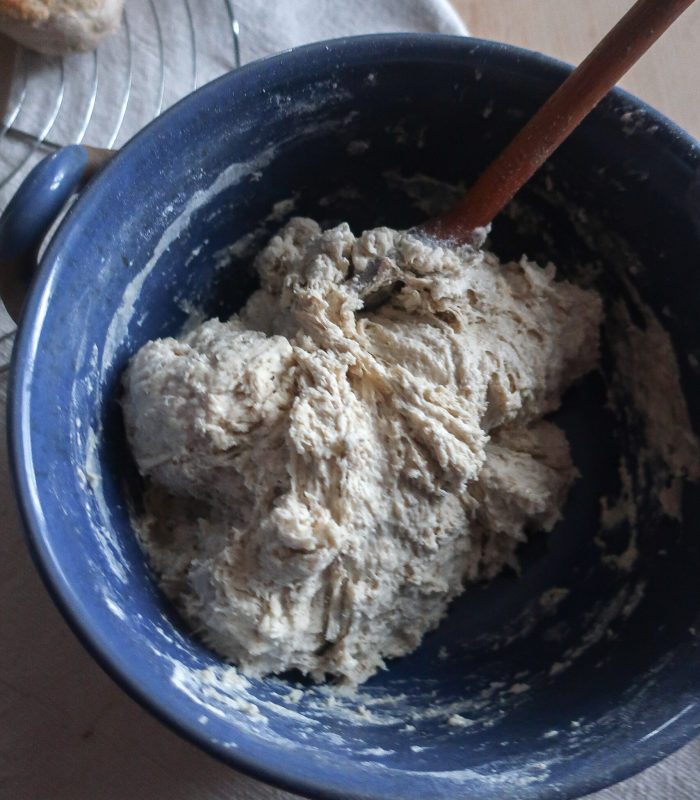
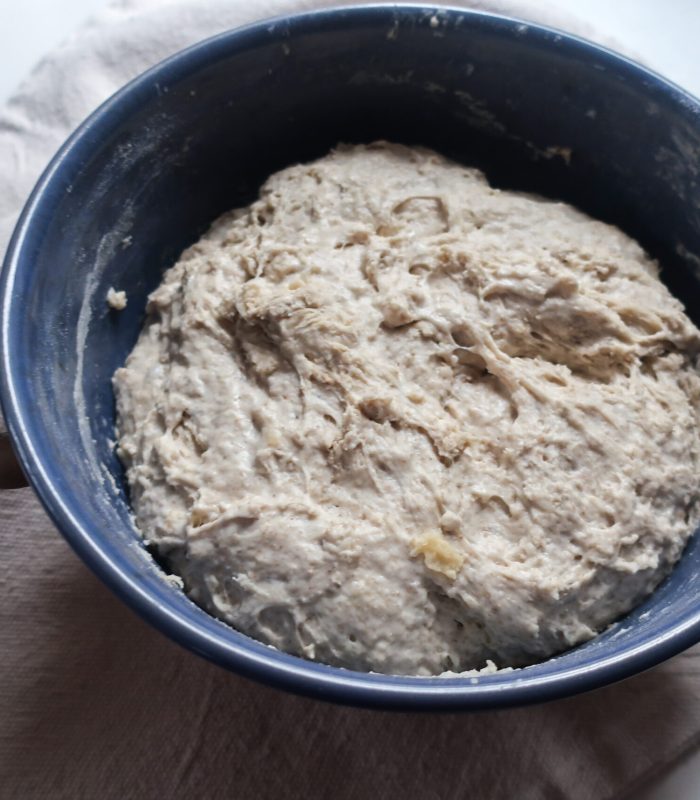
In the meantime, you can stretch and fold- the dough a few times. Stretching and folding increases the elasticity of the dough and thus improves its properties. This allows us to achieve beautiful large holes in the wheat bread.
However, in this recipe, stretching and folding the dough is not necessary because we are not aiming for large holes in the bread. I usually only do them if I think that I haven't mixed the dough enough and it needs more processing.
After 3-4 hours, the dough should have increased in volume by about 2/3 . Then turn the dough out onto a floured work surface and fold it into an envelope. This means that we fold all the sides into the center of the dough to form a square or rectangle that does not stick on the outside.
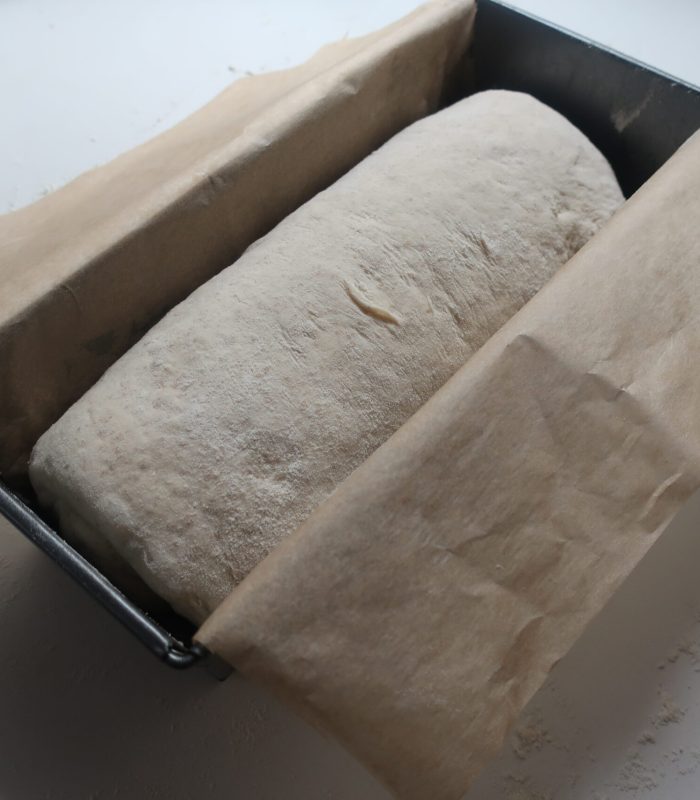
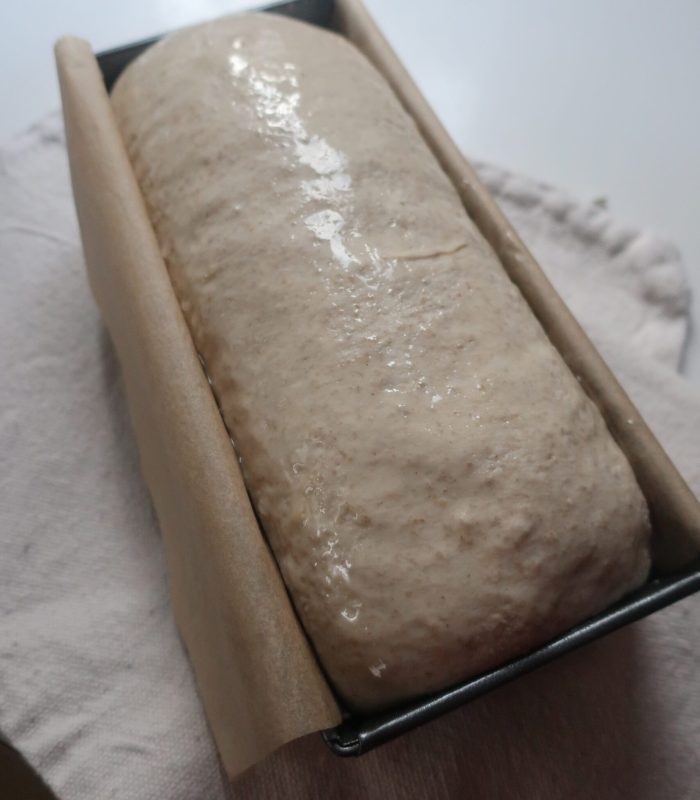
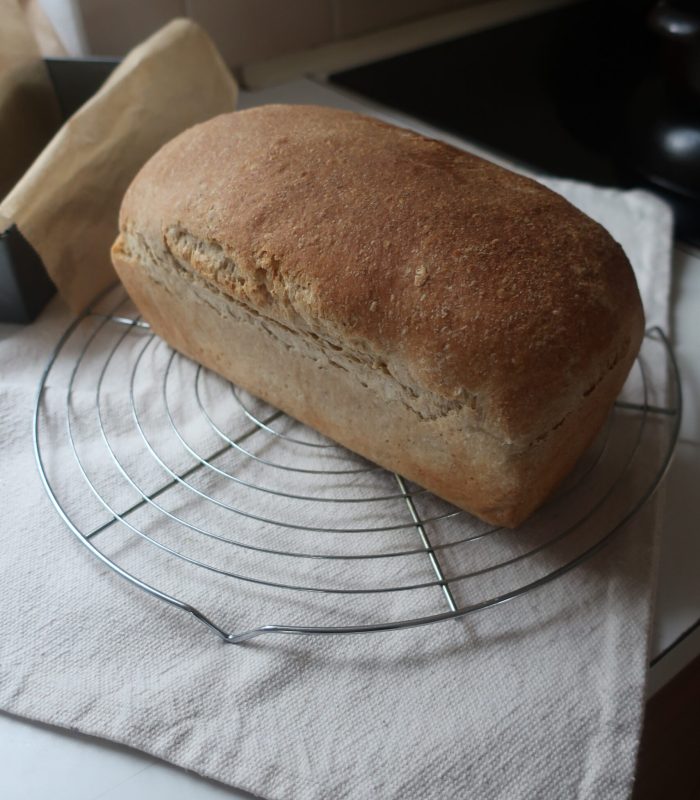
Roll out the dough with a rolling pin and start rolling from the shorter side. Transfer the rolled dough into a prepared (greased and lined with baking paper) loaf tin ideally measuring 10x25x8 cm. Cover with a plastic bag and leave to rise again until the dough has increased in volume by approximately ⅔. The dough should slightly peek out of the top of the tin.
More about stretch and folds and how to wrap the dough into an envelope you can find in this article. Wheat and rye sourdough bread (no-knead and easy).
Brush the risen dough with melted lard and bake in a preheated oven at 180°C for about 45 minutes. After baking, remove the bread to a wire rack and let cool. Slice ideally when cooled.
How to plan the baking of wheat sourdough bread?
- 1. day in the evening: 20:00 mix the levain and let ferment overnight in a hot spot
- 2. day in the morning: 7:00 mix the dough with a wooden spoon , cover the bowl with plastic wrap and let it rise for about 3-4 hours
- 8:00 – 10:00: I can make some stretching and folding 1-4x.
- 10:00-11:00: The dough should have risen, I roll it and add in a loaf thin for the second rise
- 14:00: The dough should have risen, brush it with melted lard and bake in a preheated oven
- 14:45 The bread should be baked, take it out on a wire rack and let it cool
Videorecept:
TIPS:
- Rye levain can also be made from 100 g of wholemeal rye flour and 100 g of water. This will create more levain and the dough will rise faster.
Recipe
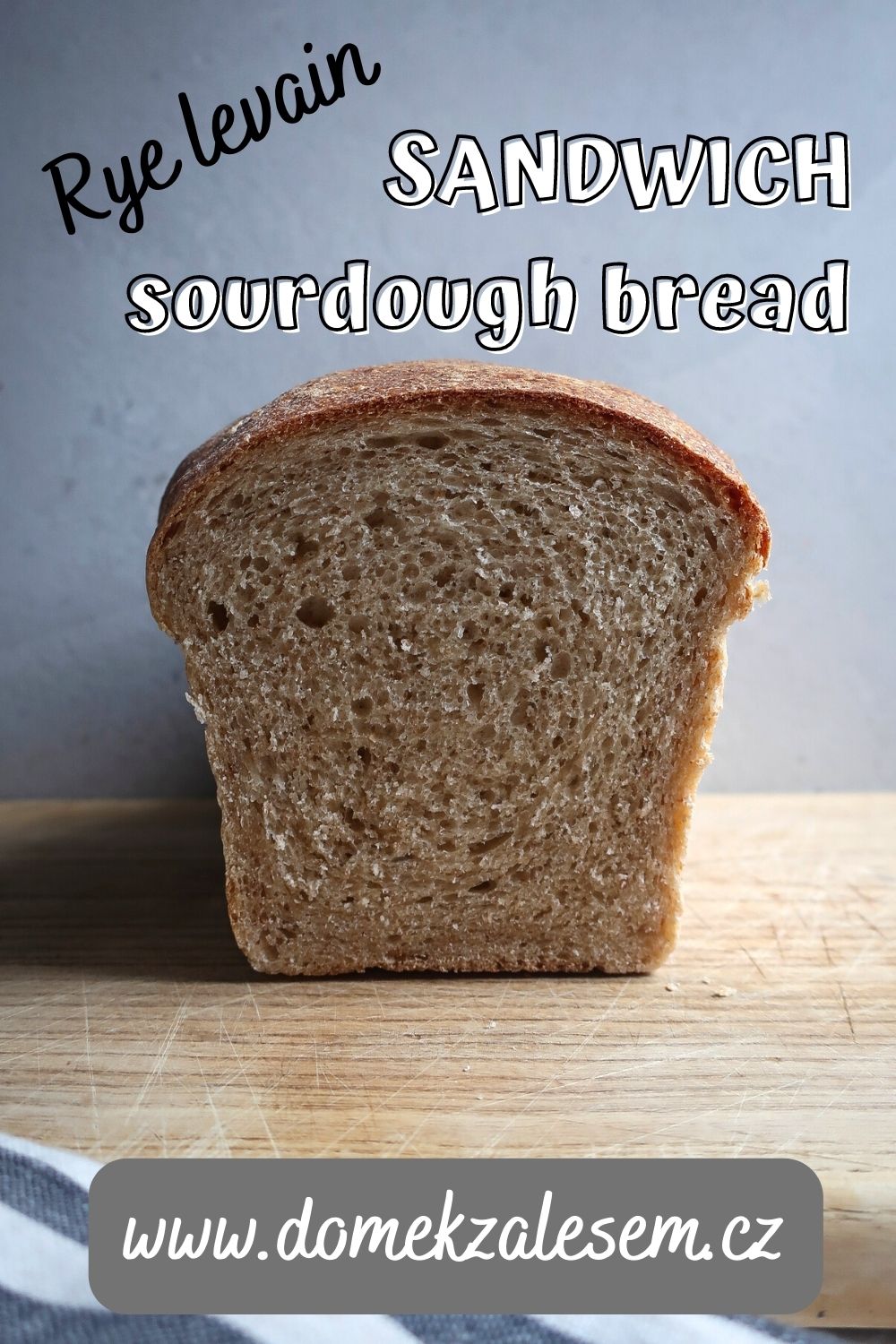
Recipe for 1 big loaf
Rye levain sandwich sourdough bread
Ingredients:
for rye levain:
- 75 g rye wholemeal flour
- 75 g water at room temperature
- 1 tbsp (25 g) sourdough starter (rye or wheat)
for dough:
- 500 g spelt white flour (or a combination with bread flour)
- 50 g butter, melted
- 15 g cane sugar
- 10 g salt
- rye levain
- 270 g water
others:
- loaf tin 10x25x8 cm
- lard, butter, milk or water for brushing
Instructions:
We have to divide the bread making process into two days.
- First day: In a big bowl, mix all ingredients for rye levain. Let it ferment overnight for 8-12 hours in a warm place.
- Second day: Add all the ingredients for the dough to the bowl with rye levain: flour, melted butter, salt, sugar and water. Just knead the dough with a wooden spoon so that no dry spots are visible. Cover the bowl with a plastic bag and leave to rise for 3-4 hours in a warm place.
- Stretch and folds: In the meantime, you can stretch and fold the dough a few times.
- After 3-4 hours, the dough should have increased in volume by about 2/3 .
- Prepare a bread tin measuring 10x25x8 cm. Grease it with oil (I use coconut oil) and line it with baking paper. Let the baking paper peek over the edge, so it's easier to remove the bread from the tin.
- Then turn the dough out onto a floured work surface and fold it into an envelope. This means that we fold all the sides into the center of the dough to form a square or rectangle that does not stick on the outside.
- Cover with a plastic bag and leave to rise again until the dough has increased in volume by approximately ⅔. The dough should slightly peek out of the top of the tin.
- Brush the risen dough with melted lard and bake in a preheated oven at 180°C for about 45 minutes.
- After baking, remove the bread to a wire rack and let cool. Slice ideally when cooled.

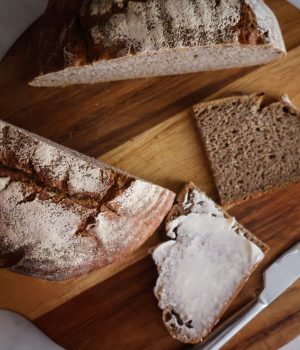
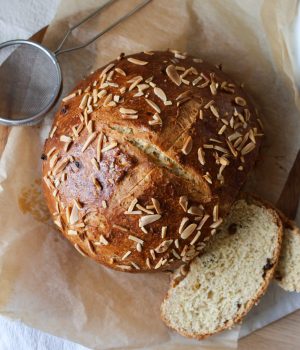
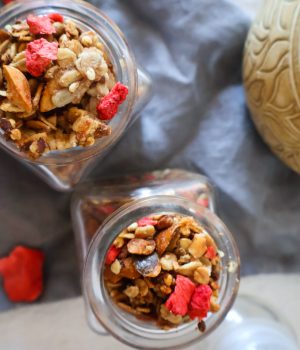
Dobrý den. Může druhé kynutí probíhat od večera v lednici do druhého dne a chleba tak péct po příchodu z práce následující den odpoledne?
Dobrý den, určitě můžete. Jen v lednici bude kynout ještě pomaleji kvůli obsahu másla než klasický chléb. Kdyžtak pak ještě můžete dát chléb dokynout v teple na lince že jo :)) Určitě dejte vědět, jestli to budete zkoušet, jak dlouho to trvalo. 😉
Tento tousťák je už u nás doma stálicí. Miluju, jak voní máslem a je příjemně nakyslý. Skvěle drží pohromadě, dobře se krájí a je stále měkký! Moc doporučuju a děkuji za recept ❤
<3
Dobrý den Radko. Chci se zeptat, jak by se pekl dlouho v keramické formě? Dělám žitný chléb a v té formě ho musím dát péct do studené trouby. A peče se déle, celkem 80 min místo 55 min. Nemáte s tím zkušenosti?
Dobrý den, s keramickou formou jsem zatím teda nepekla. Napadá mě jen jestli to není podobné jako v Simaxu. U toho je potřeba péct na spodním roštu. Nezbývá než zkoušet, co vám bude vyhovovat nejlépe. Budu ráda, pokud mi dáte vědět, jak se vám v keramice chléb daří! 🙂
Hezký den Radko. Chleba jsem pekla už několikrát, je to mňamka. Dělám půl na půl hladká a celozrnná špalda, zkusím někdy i jen z hladké. Peču ve skleněné formě (Simax nebo Pyrex… už nevím), pekla jsem teď těch 45 min a myslím, že je ok. Zkusím příště péct déle, viz příspěvek výše. Nemáte nějaký tip, jak poznat, že je chleba již upečený? Děkuji